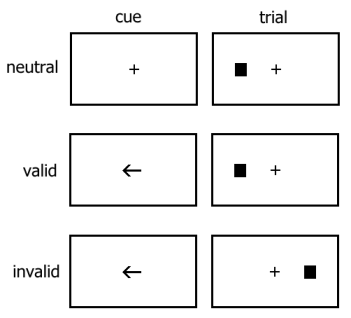
1. What is attention, and what are saccades and fixations?
2. How are overt and covert attention different? How are selective and divided attention different?
3. Can attention enhance perception and action?
4. Is attention location-based? Is attention object-based? What do Balint’s syndrome and unilateral neglect reveal about the nature of attention?
5. What are two forms of “blindness” in which attention limits perception?
6. What is the binding problem, and what are two potential solutions?
7. Describe Anne Treisman’s Feature Integration Theory, and give its pros and cons.
Attention: mental _________ for seeking out and focusing on relevant (visual) stimuli, which are consequently processed to a greater extent (at the expense of other stimuli)
The amount of information processed is limited:
• _______ systems are limited
e.g., visual fixations, size of foveal gaze
• _____ systems are limited
e.g., movements planned/words spoken sequentially
Visual scenes are scanned to take in different parts; measured with camera-based eye-trackers:
• ________: small, rapid eye movements
- saccadic suppression: attenuation in some spatial frequencies during saccade
▸ neither motion of the eye/motion blur nor gap in perception is detected
▸ begins ______ eye movement (thus, is not an optical effect)
• _________: pauses that typically indicate where a person is attending
- about 3 fixations/second
- fixation locations may be determined by:
▸ visual salience: colour, contrast, orientation (______-__ process)
▸ picture meaning/observer knowledge: what do you expect to see? (___-____ process)
▸ task demands: what are you being asked to do?
• _____ attention: directing foveal gaze (and attention) to a stimulus
• ______ attention: directing attention to a stimulus in peripheral vision
Helmholtz (1896):
- put matrix of letters on wall, with fixation cross in the centre
- fixated on cross and turned lights off
- directed his attention (not his eyes) to a certain location, then briefly illuminated room with a spark
- could perceive letters in attended region, but not in other regions
- attention can be used to select stimuli independent of ________
• _________ attention task: requires responding to a stimulus while ignoring others
e.g., reading a textbook while trying to ignore interruptions
• _______ attention task: requires attending to two or more simultaneous stimuli
e.g., driving, drinking a coffee, and talking on cell phone at the same time
Green and Bavelier (2003):
- found that action video game players consistently performed ______ on tests of attention and information processing
- is this because visually intelligent people are attracted to action video games, or do action video games enhance attentional processing?
- had non-gamers play Medal of Honor: Allied Assault™ game 1 hour/day for 10 days: visual attention skills ________
- less improvement in control group who played ______™
- attention is a skill that can be honed with practice
Also found:
• action gamers can visually track more objects simultaneously (playing action video games improves this skill) (Green & Bavelier, 2006)
• 30 hours of game-playing (Unreal Tournament 2004™) enhanced visual ______ by about 20% (Green & Bavelier, 2007)
• 50 hours of action game-playing (Call of Duty 2™) improved contrast sensitivity 43-58% compared to control group (playing The Sims 2™) (Bavelier & colleagues, 2009)
• action game-playing speeded reaction time by 13%, with no decrease in accuracy in a number of different RT tasks--contravening the speed-accuracy tradeoff (Dye, Green, & Bavelier, 2009)
• 5 hours of action game-playing (Wii Mario Kart™ or Unreal Tournament 2004™) improved visuomotor control (e.g., driving; Li, Chen, & Chen, 2016)
• however, one study found no cognitive improvement due to game playing practice (Kramer & colleagues, 2008)
Michael Posner, Nissen, & Ogden (1978):
- attention viewed as a _________: can focus on certain locations
- components of attention:
1. disengaging attention from current location
2. ______ attention to new location
3. engaging attention in new location
- precueing (or Posner spatial cueing) task:
• observers looked at fixation cross
• three conditions:
1. neutral: no cue presented
2. valid: arrow appeared, pointing to direction of subsequent stimulus
3. invalid: arrow pointed in the wrong direction
• task: on which side did the target appear?

- results:
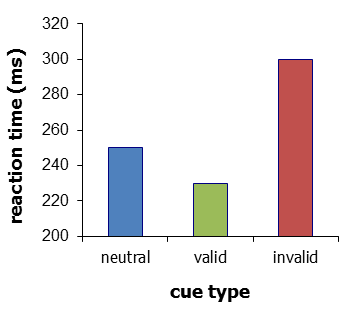
- conclusions:
• reaction time affected by type of cue
• attention can be directed to a particular location, which ________ perceptual processing
• if cue is invalid, attention must be disengaged, moved, and re-engaged
• attention is not only exogenous or “stimulus-driven” (______-__), but also endogenous or “goal-directed” (___-____)
Balint’s syndrome
- patients experience more illusory conjunctions; deficit in ________ targets in conjunction search
- simultanagnosia: difficulty in attending to more than object at a time--even when overlapping:
• supports the idea that attention can be object-based
• syndrome may be due to inability to _____ attention among objects
Unilateral neglect (a.k.a. hemispatial neglect)
- deficit in awareness of items on one side of space, due to brain damage
- damage results in neglect of objects (or parts of objects) in the contralesional visual field
e.g., may eat food from just one side of a plate, shave/make-up one side of face, fail to _____ one half of their body, or copy only half of a drawing:
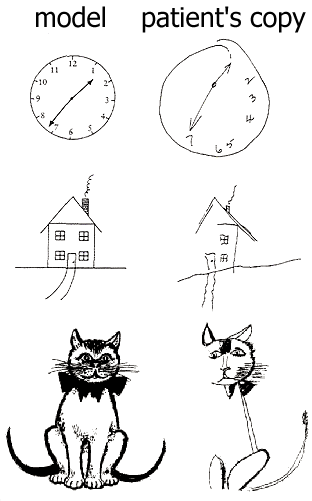
- patients often unaware of this deficit
- typically due to damage in right posterior parietal cortex, critical to attention and selection
- explanations:
• problem in ___________ attention from ipsilateral (same) side; cueing (directing attention) helped reduce spatial biases
• disruption of _______ between hemispheres in directing attention; more stimuli on ipsilateral side hampers attention to contralateral (opposite side) items:
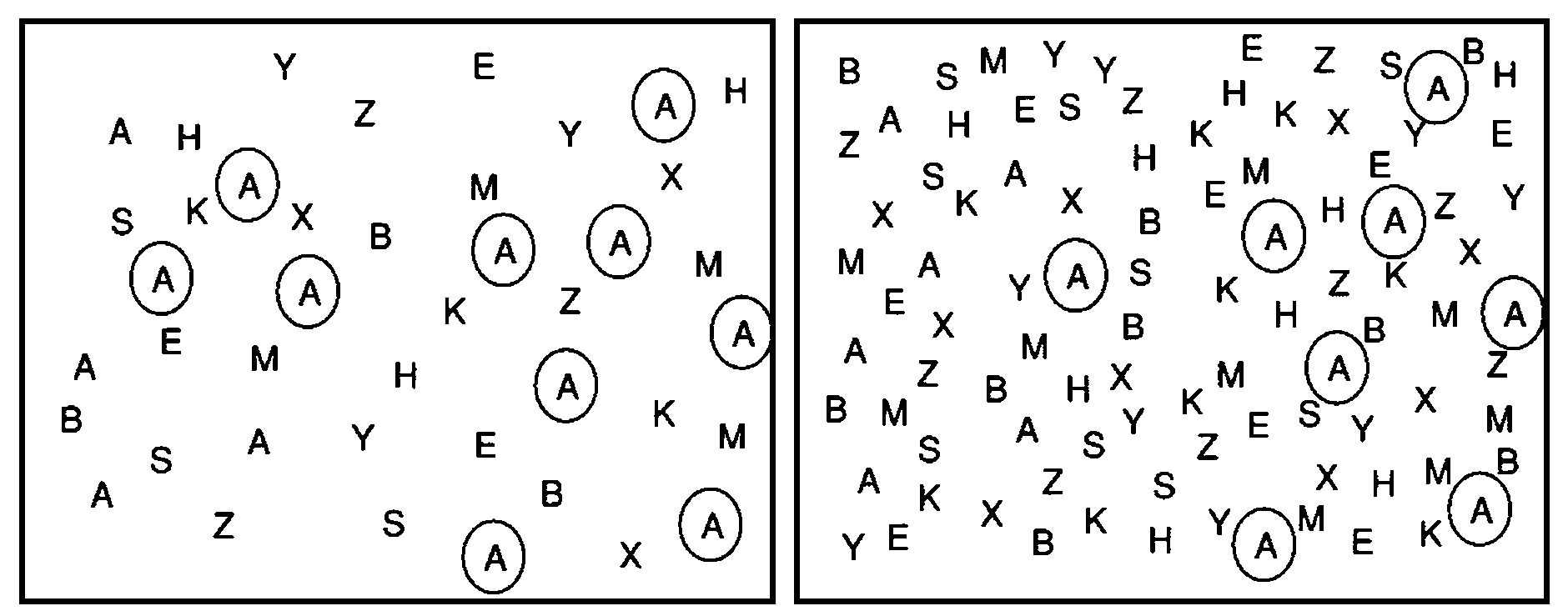
- however, syndrome may be ______-_____: left side of object neglected, rather than the left side of space
e.g., control participant, copying drawing upright and rotated:
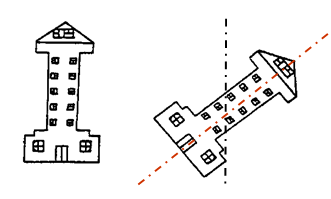
e.g., neglect patient:
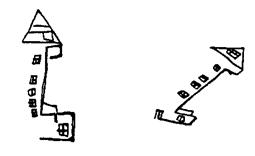
- patient with object neglect cannot detect differences on the left side of an object--even when it falls into the right visual field
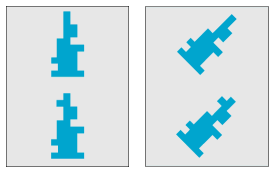
- how to reconcile this evidence: neglect is space-based versus object-based?
Humphreys & colleagues (2010):
- participants: 41 brain damaged people with neglect
- stimuli: sheet with 150 drawings of apples:
• 50 apples have a complete outline
• 50 apples have a gap on their left side
• 50 apples have a gap on their right side
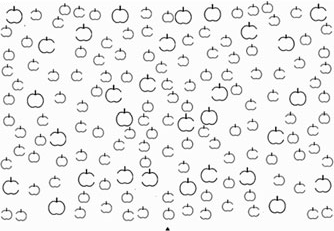
- task: cross out all complete apples in 5 min.
- two distinct patterns of results:
• __________ neglect: unaware of one side of space:
▸ 11 people overlooked complete apples on the left side of the page; 2 people missed complete apples on the right side
▸ brain damage was clustered in right anterior cortical regions, and subcortical structures
• ___________ neglect: unaware of one side of objects:
▸ 8 people crossed out apples with gaps on their left side; 2 people crossed out apples with gaps on their right side
▸ brain damage was in right posterior cortical regions
- brain damage to certain right parietal regions was common to both groups
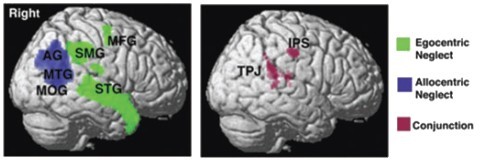
- implications:
• these different forms of neglect may reveal the nature of attentional processing
• attention may be ______ location-based or object-based
• different parts of the brain process different kinds of attention
▸ damage to ________-based system produces egocentric neglect
▸ damage to ______-based system results in allocentric neglect
• location-based processing is better suited to static scenes, whereas object-based processing works well for following a moving object in dynamic scenes
_____________ blindness: stimulus that is presented, but is not attended, is not perceived (a.k.a. “looked-but-didn’t-see” problem)
Mack & Rock (1998):
- participants briefly shown a cross
- task: which is the longer arm, horizontal or vertical?
- critical trial: small geometric shape also presented in display
- recognition task: identify the shape

- results: 25% correct (chance level) on critical trial
- conclusion: there is no conscious perception of the visual world without _________ to it
Simons & Chabris (1999):
- showed participants a video of two teams of three basketball players
- task: count how many times the players wearing white pass the basketball
- results: 46% of observers ______ the _______
Weingarten (2007):
- took renowned violinist Joshua Bell to L’Enfant Plaza subway station in Washington, D.C.
- set him up as a busker
- 1,097 people passed by; 7 stopped to listen; only 1 recognized him
- in 45 minutes, he collected $32.17
Hyman & colleagues (2010):
- observed 151 college students walking across a main campus square
- had a person in a purple-and-yellow clown costume with polka dot sleeves, red shoes, and red nose ride a ________ around the square
- asked participants if they remembered seeing the clown
- results:
condition: |
saw clown: |
talking with a friend |
71% |
walking without distraction |
51% |
listening to music |
60% |
talking on a cell phone |
__% |
______ blindness: an inability to detect changes in an object or a scene
Levin & Simons (1997):
- observers told to “pay close attention” to a video of a conversation
- only 1 of 10 observers noticed any changes
Simons & Levin (1998): the door study
- only half of the observers noticed a change in the stranger
- changes may be local or global, fast or slow
- however, people do notice changed sex, race, or social group
Implications:
• not everything presented to our senses is processed
• attention is _______
• visual encoding must be selective or “______”
• how are the independent, parallel subsystems in vision (form, motion, colour, etc.) fused together into a _______ percept?
• how are the parts of an object unified into a whole?
Hubel & Wiesel (1977): ___________
- neurons coding for different aspects of an object (e.g., color, form, etc.) converge on a single neuron detecting that particular combination
- implies we have a neuron for every object we can recognize (“___________ cell” theory)
- problems: little ________; we can recognize too many objects; cannot account for perception of novel objects
Engel et al. (1991): ________ _________ theory
- columns in the cortex are connected with each other by a network of neurons
- assemblies of interconnected neurons, each signaling different aspects of the same object, fire in synchrony
- however, if neurons are triggered by different stimuli, there is no synchronization
- evidence: crosscorrelograms of activity from cat cortical neurons with similar receptive fields
• one long moving bar: bursts of neural activity are strongly correlated
• two small bars moving in the same direction: synchronization is weaker
• two bars moving in opposite directions: no synchronization
- _________ may play a role in synchronizing activity (Gross et al., 2004)
(Treisman, 1986; Treisman & Gelade, 1980):
- Anne Treisman (b.1935-d.2018) won the Grawemeyer Award in Psychology in 2009
- attention must be focused on particular stimulus attributes or parts in space to construct a representation or percept
1. ____________ stage:
- rapid, automatic decomposition of stimulus into a number of basic properties (“__________”)
- processing is in parallel
2. _______ attention stage:
- serial process
- spatial location selected
- primitives existing at this spot are combined
e.g., redness and X-ness combined into red X-ness
- combination object is called object file only exists temporarily to be examined by focused attention
Visual search:
- primitives determined via visual search experiments:
• task: find target among nontargets/“distractors”
• observers asked whether a display contains target
• RT (and errors) are recorded
- types of visual search:
• _______ search: target defined by one basic property/primitive
e.g., find a green 2 among red 2s
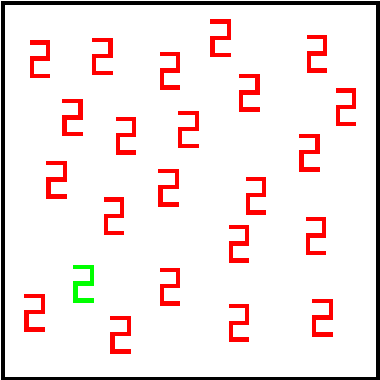
• ___________ search: target defined by a combination of two or more basic properties/primitives
e.g., find a green 5 among green and red 2s, and red 5s
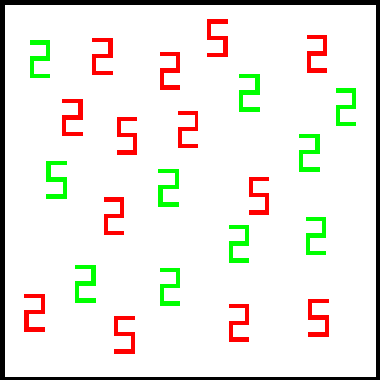
• spatial _____________ search: target defined by organization of features
e.g., find a 5 among 2s
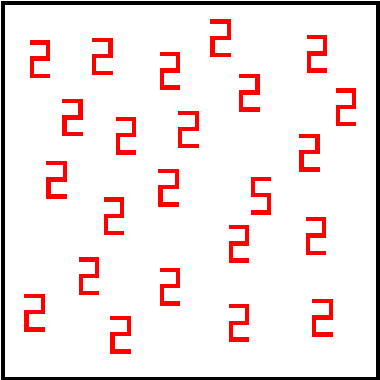
- “___-___”: time needed to find the target is very short/constant in feature search
• RT not influenced by the number of distractors
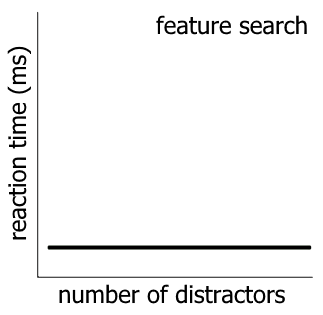
• primitives cause pop-out:
e.g., colour, brightness, orientation, length, curvature, etc.
• target location is identified in preattentive stage: search is in parallel
- “inefficient” search: conjunction and spatial configuration searches take longer
• RT increases as number of distractors increases


• more time is spent in focused attention stage: search is serial
Pros & Cons:
![]() explains binding at the psychological (not neural) level, and accounts for the role of attention
explains binding at the psychological (not neural) level, and accounts for the role of attention
![]() evidence: ________ conjunctions: when attention is overtaxed, primitives may be incorrectly combined
evidence: ________ conjunctions: when attention is overtaxed, primitives may be incorrectly combined
e.g., red Xs, blue Os: you may perceive a blue X
e.g., Stroop effect (1935): shows attentional inhibition of automatic cognitive processes
![]() with practice, conjunction search may become automatic/parallel
with practice, conjunction search may become automatic/parallel
![]() is attention _________ for perception?
is attention _________ for perception?
How can we be aware of anything that we are not attending to?
How can we shift our attention to a new stimulus, if we aren’t aware that it exists yet?
Cases of brain damage (e.g., blindsight) can reveal perception without awareness.
• eyes are not like cameras; visual data not processed like watching a _____
• scenes are decomposed, ________ into their constituent parts
• different aspects (e.g., form, motion, location, colour) are processed in different areas, in ________
• component parts of an object are re-integrated and ___________ into a percept
• information flows from lower- to higher-level areas for processing (bottom-up), but there are also pathways sending ________ (top-down processing)
• _________ is required for further processing of percept, but attention is limited (bounded awareness)